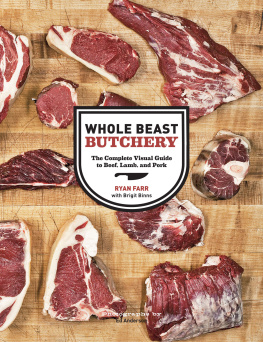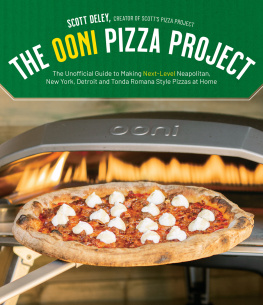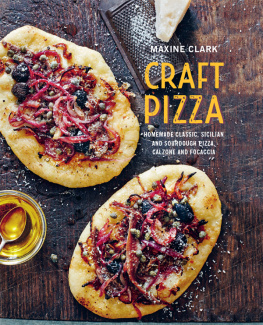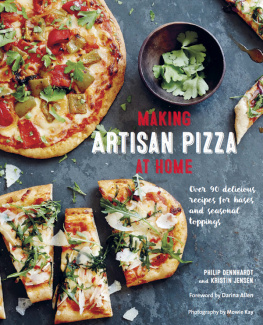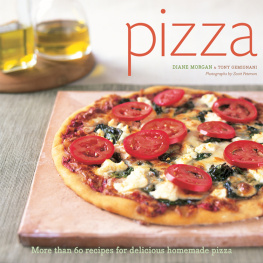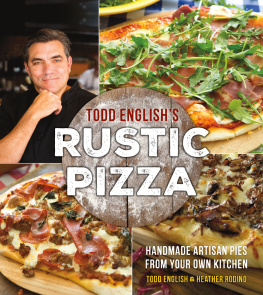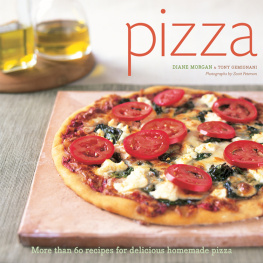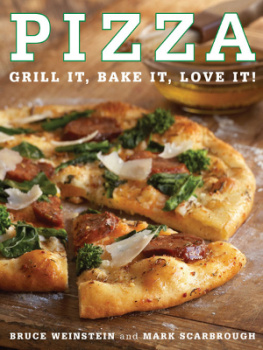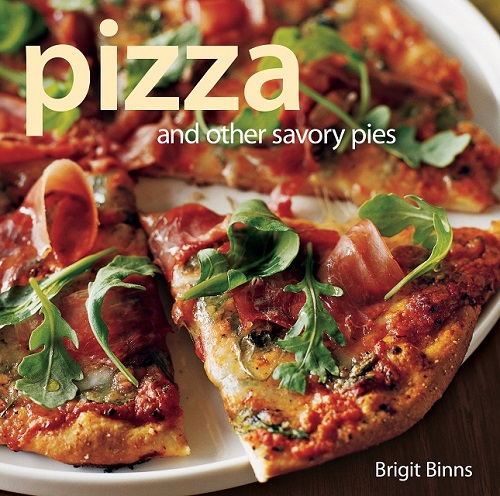Making Pizza at Home
Pizza is Italian in origin, but this humble flatbread with savory toppings has captured the attention of the entire planet. Pizza is enjoyed across the globe, and in every country where its eaten its tailored to the cultural palate. Take, for example, Mexicos ranchera pizza with beans and chorizo and Indias seekh kebab pizza with kebabs of spiced ground meat. Its no wonder, really, that pizzas appeal is so far-reaching. Beneath the pepperoni, cheese, and tomato sauce that we have come to know and love in this country is a blank canvasor doughthats primed for all sorts of culinary renditions.
In Italy, however, pizza is made with a great deal of restraint and respect for tradition. Pizza Napoletanaor Neapolitan pizzais widely regarded as the pizza par excellence, so much so that its been given D.O.C. (Denominazione di Origine Controllata) status to protect its integrity. This means that only pizzas made according to certain strict standards can be called authentic Neapolitan pizza. There are only two primary types of traditional Neapolitan pizza: pizza marinara made with tomato sauce, garlic, and oregano, and pizza Margherita made with fresh tomatoes, fresh mozzarella, and basil.
In contrast to the Italian approach, in the United States, just as in other parts of the world, many liberties have been taken with the creation of pizza. Popular American pies include barbecued chicken pizza with smoky, tangy barbecue sauce; Hawaiian pizza topped with pineapple and Canadian bacon; and The Works, a pizza blanketed with every imaginable topping. Then there are the regional pizzas: New York is known for its thin-crust pizza and Chicago for its deep-dish pies. Devotees of each will argue about which is the best.
Pizza is often considered convenience food because its usually ordered out. Homemade pizza, however, is not about convenienceits about enjoying the making and baking process, as well as the satisfaction that goes along with creating wholesome and delicious food. To help get you started with pizza-baking at home, this book contains all the recipes you need. It covers Italian classics like . You will also find recipes for different types of pizza doughs, recipes for pizza staples like tomato sauce, and, just as importantly, the inspiration to make and bake all sorts of fresh, flavorful pizzas at home.
Pizza equipment
DOUGH-MAKING EQUIPMENT
Pizza dough is easy to make and comes together quickly in a food processor or in a heavy-duty stand mixer with a dough hook attachment. The recipes in this book were developed using an 11-cup food processor. For more on .
PIZZA STONE
Traditionally, pizzas are baked in coal- or wood-fired ovens with brick floors that produce crisp, brown crusts. To imitate the intense heat of a brick oven in a home oven, a pizza stonea flat piece of unglazed stonewareworks beautifully. Pizza stones are available in rectangular and round shapes; a rectangular one will better accommodate a large or slightly misshapen pie. A pizza stone can be left in the oven for any baking or roasting that you need to do, but if you must remove it, first allow it to cool thoroughly. Caked-on bits of food can be scrubbed off with a scouring pad and warm water; do not use sudsy water, as the soap will seep into pores of the stone. Unglazed terracotta tiles or baking tiles are good alternatives to a pizza stonethey need to be pieced together to line the oven rack. If you dont have a pizza stone or baking tiles, you can use a large heavy-duty baking sheet (solid, heavy construction ensures that the pan will not warp), preheating it just as you would a stone.
PIZZA PEEL
A pizza peel, sometimes called a bakers peel, is a wide paddle made of wood or metal, attached to a long handle. Its used to slide freeform pizzas and breads onto and off of a hot pizza stone because its too treacherous to handle the heavy pizza stone itself. Pizzas can be formed directly on the peel so that they do not need to be transferred once they are topped. Though it takes a few tries to learn to use a pizza peel skillfully (it requires a quick, decisive motion to get the items off of and onto the peel), its a useful piece of equipment for any avid pizza baker. A baking sheet can stand in for a pizza peel, but it must be rimless so that a pizza can easily slide off and on.
KNIVES AND CUTTERS
A chefs knife is an indispensible kitchen tool for any cook, pizza-bakers included. Its not only used for preparing the ingredients that go on top of a pizza, its also useful for cutting the baked pizza for serving. To slice your pizza, use the largest chefs knife you own, preferably one with an 8- to 10-inch blade. Place the tip of the knife at the center of the pie with the knife handle angled upward. Press down on the back of the upper part of the blade with your other hand to steady the blade and make sure that the tip of the knife cuts through the bottom crust. Lower the knife handle to cut through the pie; before removing the knife, make sure that you have cut all the way through the bottom crust. Repeat to cut the rest of the pizza. For some shape variety, you can cut oval or rectangular pizzas into strips, rectangles, or squares.
For slicing baked pizzas, a pizza wheel is not a necessity, but its a handy tool to have, especially if you make pizza often. With one quick movement, a pizza wheel allows you to cut cleanly through the toppings and crust. A pizza wheel is also a boon for bakers who trim rolled doughs and cut unbaked pastry into strips and rounds. When shopping, look for a solidly built pizza wheel with a comfortable, secure grip and a large, sturdy blade.

The secret to problem-free pizza
Before a pizza is formed on the pizza peel, the peel is usually dusted with flour, semolina, or sometimes cornmeal to ensure that the dough will slide off easily into the oven. Though this method works well in commercial kitchens, it is less sensible in home kitchens, as the flour is prone to burning in the high heat of the oven. Parchment paper is the solution to this problem. Shaping and baking the pizza on a large sheet of parchment paper eliminates the need to use flourthe parchment acts as a liner that allows the pizza to slide smoothly from pizza peel to pizza stone and vice versa. Parchment paper is heat-resistant, so it will not burn, and is thin enough that it will not interfere with the formation of the crust. Unbleached parchment paper is brown in color; regular parchment is bright white. They work equally well, but try to purchase parchment paper that is at least 14 inches wide so that it is large enough accommodate a full-sized pizza. Do not substitute waxed paper for parchment because it cannot withstand high oven temperatures.

Pizza ingredients


